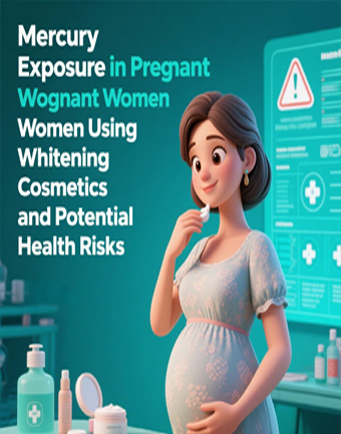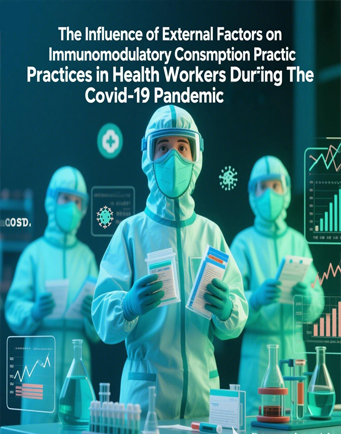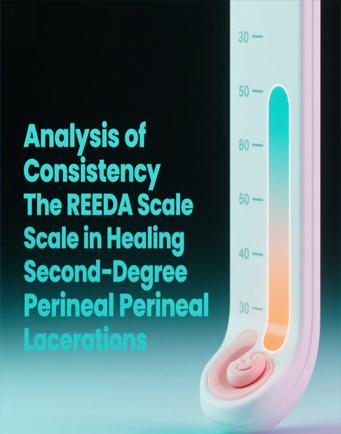Prediction Model of Related Factors with Youth Fertility in Kalimantan
Downloads
Adolescent fertility is an essential issue because it is associated with the level of morbidity and mortality of mothers and children. Kalimantan provinces own fertility problems. Teenagers are still complex, including Age Specific Fertility Rate 15-19 years is still significant. It is recorded that 4.6% of children aged 10-17 years in Kalimantan have got married. The objective of this study is to identify the predictive model of factors correlated with provincial youth fertility in Kalimantan. The analysis was conducted by employing descriptive and inferential methods and binary logistic regression. The results of the study were among 433 adolescents in Kalimantan, 11% were married, 9.9% had given birth or were pregnant with their first child, 14.1% experienced sexual relations and 3.1% encountered sex at <15 years of age. The data employed was the 2017 Indonesian Health Demographic Survey with a unit of analysis for adolescents aged 15-19 years in 5 provinces in Kalimantan totaling 433 respondents. The sampling technique employed total sampling. Statistically, it is discovered a significant relationship between age, marital status, adolescent sexual behavior, contraceptive use status, education level, economic status, and access to the internet with youth fertility in Kalimantan. The results of logistic regression analysis displayed that the variable of family planning use possess the most effect on adolescent fertility simultaneously with the strength of the relationship OR (Expβ) = 0.2. Suggestions for further research to further scrutinize relevant programs such as maturing age at marriage and parenting skill to suppress adolescent fertility.
Afriani, R., & Mufdlilah. (2016). Analisis Dampak Pernikahan Dini pada Remaja Putri Di Desa Sidoluhur Kecamatan Godean Yogyakarta. Prosiding Seminar Nasional dan Internasional Rakernas AIPKEMA, 235-243.
Agustini, R. T. Determinan sosial dan dampak kesehatan pernikahan dini di Lombok Timur. Berita Kedokteran Masyarakat, 34(11), 4-8.
Ahmed, S., Khan, S., Alia, M., & Noushad, S. (2013). Psychological Impact Evaluation Of Early Marriages . 1(2), 84–86.
Anayochukwu, G. I. (2022). Teenage pregnancy and its consequences: Evidence from a South-eastern rural community of Nigeria. Journal of Social, Humanity, and Education, 2(3), 245-267.
Badan Perencanaan Pembangunan Nasional. (2013). Proyeksi Penduduk Indonesia: Indonesia Population Projection (Issue 6). Jakarta: Badan Pusat Statistik.
Bezie, M., & Addisu, D. (2019). Determinants of early marriage among married women in Injibara town, north West Ethiopia: community-based cross-sectional study. BMC women's health, 19(1), 1-6. https://doi.org/10.1186/s12905-019-0832-0
Desiyanti, I. W. (2015). Faktor-faktor yang Berhubungan Terhadap Pernikahan Dini Pada Pasangan Usia Subur di Kecamatan Mapanget Kota Manado. Jurnal Ilmu Kesehatan Masyarakat UnSRat, 5(3), 270–280.
Fitriyani, D., Irawan, G., Susanah, S., Husin, F., Mose, J. C., & Sukandar, H. (2015). Kajian kualitatif faktor-faktor yang memengaruhi pernikahan remaja perempuan. Jurnal Pendidikan dan Pelayanan Kebidanan Indonesia, 2(3), 38-44. https://doi.org/10.24198/ijemc.v2i3.75
Hanum, Y., & Tukiman. (2015). Dampak Pernikahan Dini Terhadap Kesehatan Alat Reproduksi Wanita. Jurnal Keluarga Sehat Sejahtera, 13 (2), 36–43.
Husna, N., Demartoto, A., & Respati, S. H. (2016). Factors associated with early marriage in Sleman, Yogyakarta. Journal of Health Promotion and Behavior, 1(2), 87-98. https://doi.org/10.26911/thejhpb.2016.01.02.04
Irwansyah, I., Ismail, D., & Hakimi, M. (2016). Kehamilan Remaja dan Kejadian Stunting Anak Usia 6-23 Bulan di Lombok Barat. Berita Kedokteran Masyarakat, 32(6), 209-216. https://doi.org/10.22146/bkm.8628
Jonas, K., Duby, Z., Harries, J., & Mathews, C. (2022). Rumours , myths , and misperceptions as barriers to contraceptive use among adolescent girls and young women in South Africa. Research Square. https://doi.org/10.21203/rs.3.rs-1692204/v1
Kementerian Kesehatan Republik Indonesia. (2020). Pokok-pokok Renstra Kemenkes 2020-2024. Jakarta: Kementerian Kesehatan Republik Indonesia.
Kementerian Pemberdayaan Perempuan dan Perlindungan Anak. (2018). Profil Anak Indonesia 2018. Jakarta: Kementerian Pemberdayaan Perempuan dan Perlindungan Anak.
Lowe, M., Joof, M., & Rojas, B. M. (2019). Social and cultural factors perpetuating early marriage in rural Gambia: an exploratory mixed methods study. F1000Research, 8, 1949. https://doi.org/10.12688/f1000research.21076.3
National Population and Family Planning Board of Indonesia. (2017). Indonesia Demographic and Health Survey 2017. Jakarta: National Population and Family Planning Board of Indonesia.
National Population and Family Planning Board of Indonesia. (2018). Mencegah Pernikahan Anak Melalui Program KKBPK. Banjarmasin: National Population and Family Planning Board of Indonesia.
Nurzia, N. Faktor-faktor yang Berhubungan dengan Pernikahan Dini di Kelurahan Simpang Tuan Kecamatan Mendahara Ulu Tanjung Jabung Timur Tahun 2018. Scientia Journal, 8(1), 205-215.
Raharja, M. B. (2014). Fertilitas remaja di Indonesia. Kesmas: Jurnal Kesehatan Masyarakat Nasional (National Public Health Journal), 9(1), 6-13. https://doi.org/10.21109/kesmas.v9i1.449
Raj, A., Salazar, M., Jackson, E. C., Wyss, N., McClendon, K. A., Khanna, A., ... & McDougal, L. (2019). Students and brides: a qualitative analysis of the relationship between girls’ education and early marriage in Ethiopia and India. BMC public health, 19(1), 1-20. https://doi.org/10.1186/s12889-018-6340-6
Rizkianti, A., Amaliah, N., & Rachmalina, R. (2017). Penggunaan Kontrasepsi pada Remaja Perempuan Kawin di Indonesia (Analisis Riskesdas 2013). Buletin Penelitian Kesehatan, 45(4), 257-266. https://doi.org/10.22435/bpk.v45i4.7369.257-266
Sekine, K., & Hodgkin, M. E. (2017). Effect of child marriage on girls' school dropout in Nepal: Analysis of data from the Multiple Indicator Cluster Survey 2014. PloS one, 12(7), e0180176.
Triyanto, W. (2013). Dampak Pernikahan Di Bawah Umur dalam Perspektif Hukum Islam dan UU Nomor 1 Tahun 1974. Lex Privatum, 26(4), 1–37.
UNICEF. (2018). Child Marriage : Latest trends and future prospects. New York: United Nations International Children's Emergency Fund.
Yount, K. M., Crandall, A. A., Cheong, Y. F., L.Osypuk, T., Lisa M, B., T.Naved, R., & Schuler, S. R. (2017). Child Marriage and Intimate Partner Violence in Rural Bangladesh: A Longitudinal Multilevel Analysis. HHS Public Access, 53(6), 1821–1852. https://doi.org/10.1007/s13524-016-0520-8.Child
Copyright (c) 2022 JURNAL INFO KESEHATAN

This work is licensed under a Creative Commons Attribution-NonCommercial-ShareAlike 4.0 International License.
Copyright notice
Ownership of copyright
The copyright in this website and the material on this website (including without limitation the text, computer code, artwork, photographs, images, music, audio material, video material and audio-visual material on this website) is owned by JURNAL INFO KESEHATAN and its licensors.
Copyright license
JURNAL INFO KESEHATAN grants to you a worldwide non-exclusive royalty-free revocable license to:
- view this website and the material on this website on a computer or mobile device via a web browser;
- copy and store this website and the material on this website in your web browser cache memory; and
- print pages from this website for your use.
- All articles published by JURNAL INFO KESEHATAN are licensed under the Creative Commons Attribution 4.0 International License. This permits anyone to copy, redistribute, remix, transmit and adapt the work provided the original work and source is appropriately cited.
JURNAL INFO KESEHATAN does not grant you any other rights in relation to this website or the material on this website. In other words, all other rights are reserved.
For the avoidance of doubt, you must not adapt, edit, change, transform, publish, republish, distribute, redistribute, broadcast, rebroadcast or show or play in public this website or the material on this website (in any form or media) without appropriately and conspicuously citing the original work and source or JURNAL INFO KESEHATAN prior written permission.
Permissions
You may request permission to use the copyright materials on this website by writing to jurnalinfokesehatan@gmail.com.
Enforcement of copyright
JURNAL INFO KESEHATAN takes the protection of its copyright very seriously.
If JURNAL INFO KESEHATAN discovers that you have used its copyright materials in contravention of the license above, JURNAL INFO KESEHATAN may bring legal proceedings against you seeking monetary damages and an injunction to stop you using those materials. You could also be ordered to pay legal costs.
If you become aware of any use of JURNAL INFO KESEHATAN copyright materials that contravenes or may contravene the license above, please report this by email to jurnalinfokesehatan@gmail.com
Infringing material
If you become aware of any material on the website that you believe infringes your or any other person's copyright, please report this by email to jurnalinfokesehatan@gmail.com.





































